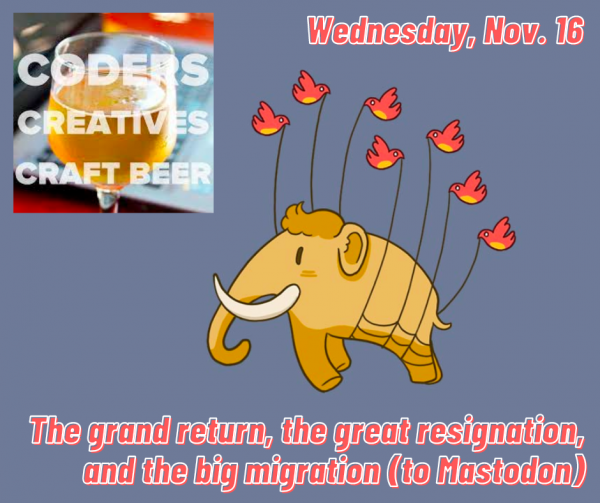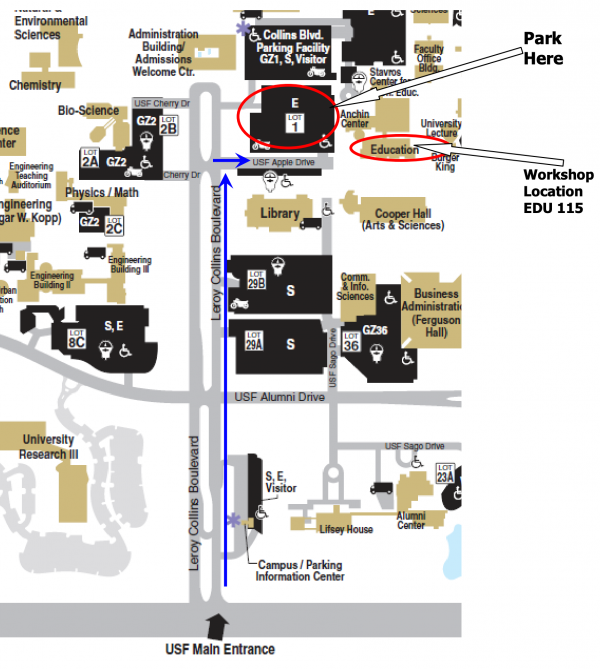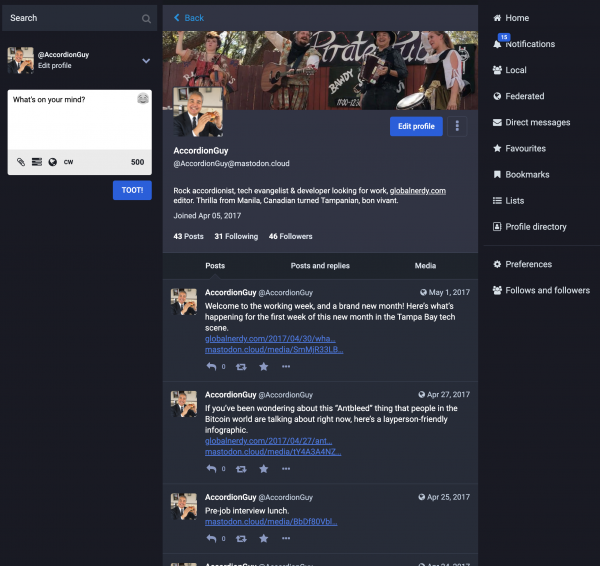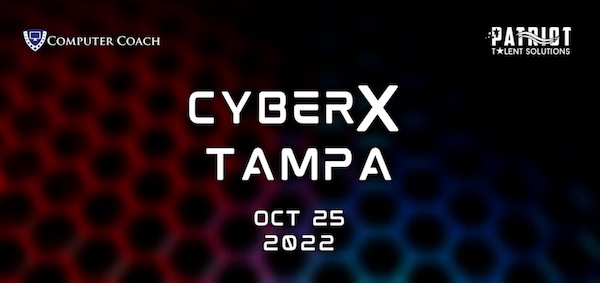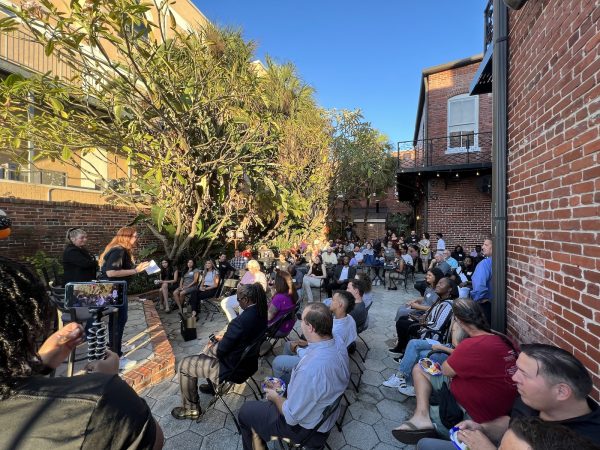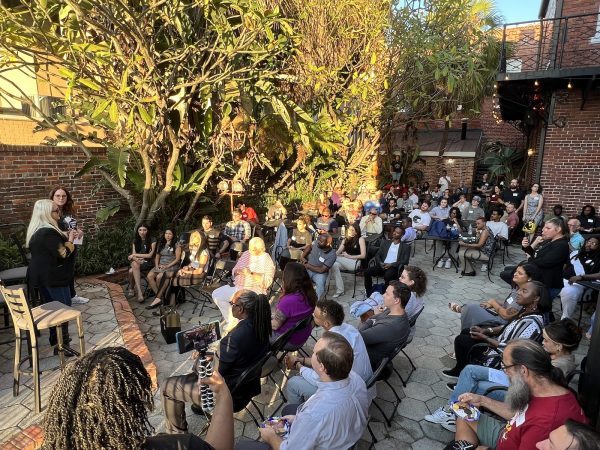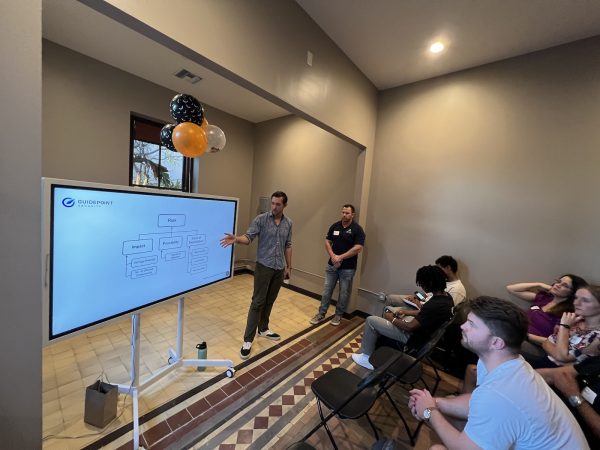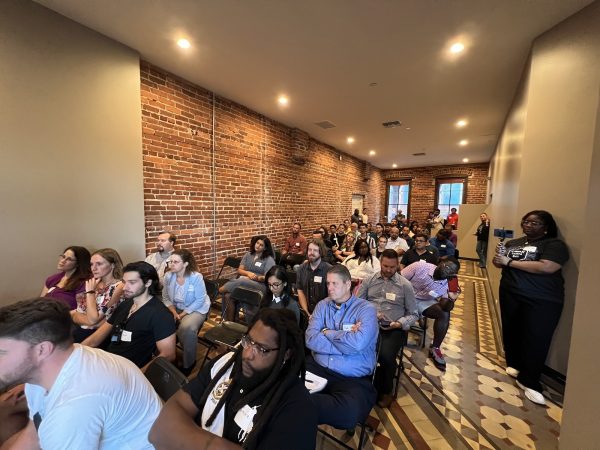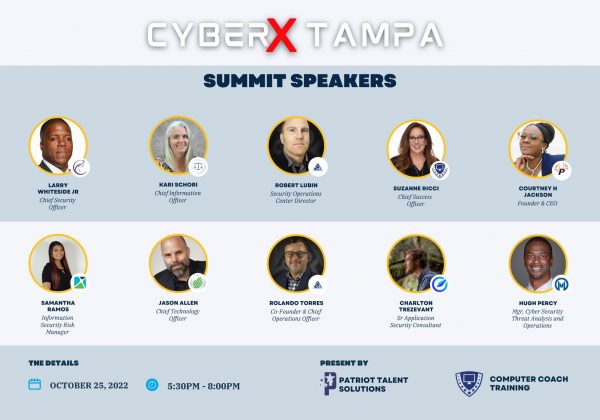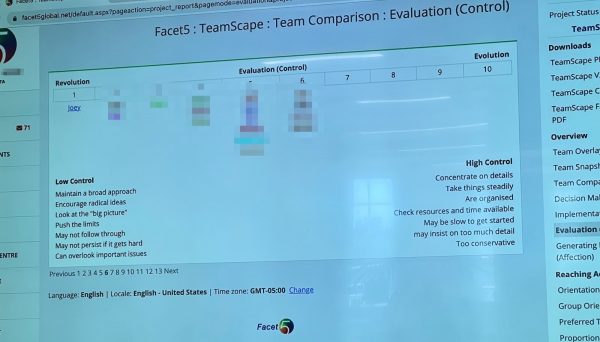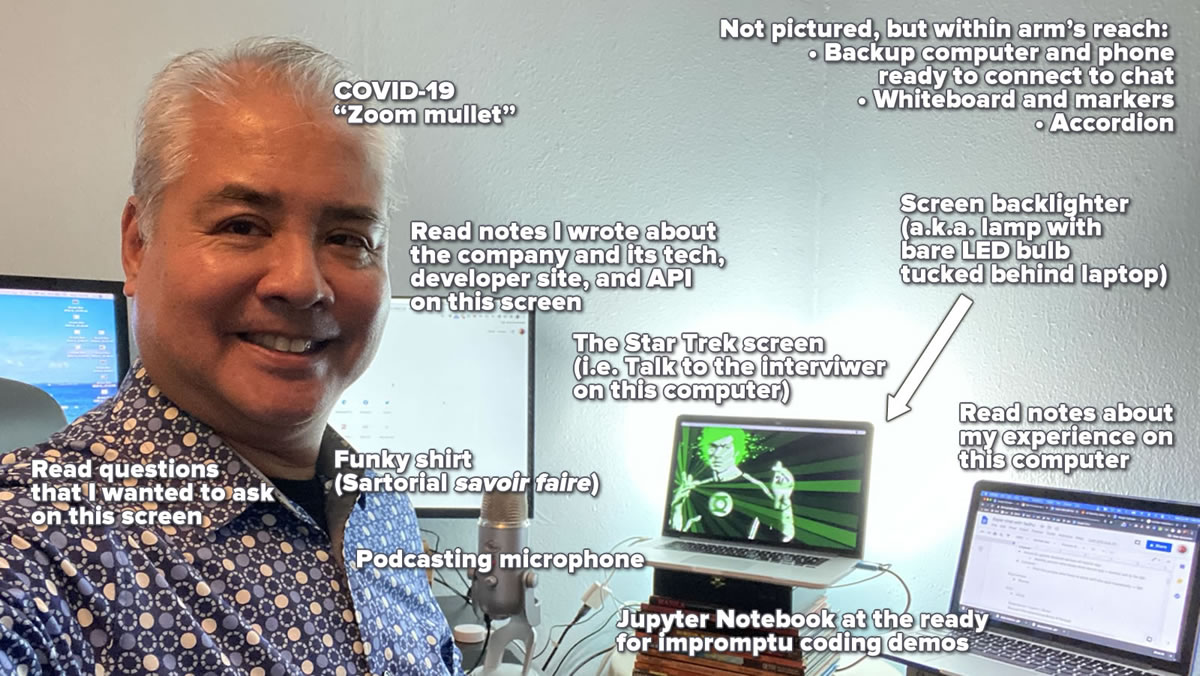The Coders, Creatives, and Craft Beer meetup returns this Wednesday, November 16th, and it’ll happen at The Corner Club in Tampa’s Seminole Heights neighborhood. They’ve got beverages, both alcoholic and non- (including some very good coffee), and great food!
Want to join us? Once again, we’re meeting at The Corner Club in Seminole Heights (1502 E Sligh Ave., 3 lights east of I-275’s Sligh exit) at 6:00 p.m. on Wednesday, November 16th. Register on the event’s Meetup page.
Mastodon and other conversations


By now, you’re probably aware of the complete dumpster fire that Twitter has become. In fact, there’s a good chance that it may have even become worse by the time you read this.
You’ve probably been hearing about an alternative social network called Mastodon, which exists in something called the Fediverse, and you might be wondering what it’s all about. We’ll show you!
We’ll also be talking about The Great Resignation in both its forms — leaving a current tech job, and landing a new one. Are you looking for a job? Are you looking to get out of a job? Are you looking to “upskill” for the job you want? We’re here to talk about that, and we’re connected — we might even be able to help you!
The Corner Club

We’ll be at The Corner Club, one of Seminole Heights’ many hidden gems. They’re a neighborhood café with lots of great food prepared from scratch (we recommend the papas bravas potatoes), an interesting drinks selection — with and without alcohol, including some really good coffee — and even local artists’ works on the wall for sale. They’ve got a great outdoor space in the back, which is where we’ll be.
In case you’re curious:
- They have a 4.6-star rating on Google, with 215 reviews
- They have a 4.5-star rating on Yelp, with 35 reviews
- They have a 5-star rating on Facebook, with 7 reviews
Coders, Creatives, and Craft Beer is Tampa Bay’s “No presentations, just conversations” meetup for coders and creatives who want to hang out, make friends, and talk over great food and drink. It’s just people getting together at an interesting Tampa Bay venue, tasting what comes out of the taps and kitchen, talking about what interests us, what we’re working on, and what we’d like to work on.
Do you write or manage code, prose, or poetry? You belong in this group. Do you make art for the eyes, ears, or other senses? Join us. Is your creativity more about business and “the hustle”? You should be here. The goal of this meetup is to bring together all sorts of people from Tampa Bay and making it an even better, interesting, and more creative place in which to live, work, and play.
